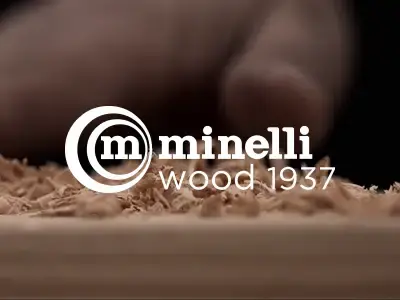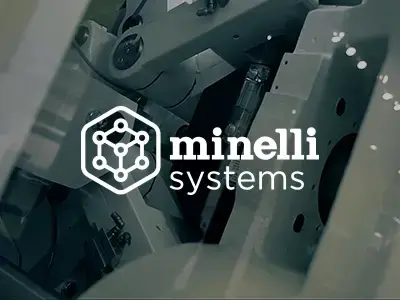 For a supplier of wooden products, it's essential to stay informed about the latest techniques and trends shaping the wood product manufacturing industry.
For a supplier of wooden products, it's essential to stay informed about the latest techniques and trends shaping the wood product manufacturing industry.
This article aims to provide insights into the current state of the industry, highlighting modern manufacturing techniques and emerging trends.
Wood product manufacturing: the most modern techniques
The wood product manufacturing industry has seen significant advancements in recent years. As a manufacturer of wooden components for the OEM market, our focus is on delivering high-quality and sustainable products. Here are the various manufacturing methods and the latest industry trends, offering a comprehensive overview of what is shaping the market today.
Computer Numerical Control (CNC) machining
CNC machines have brought a transformative change to wood product manufacturing, providing unmatched precision and efficiency. These sophisticated machines can cut, carve, and shape wooden components with exceptional accuracy, significantly reducing material waste and speeding up production times. CNC machining allows for the creation of complex designs and intricate details that would be difficult or impossible to achieve manually.
Laser cutting and engraving
Laser technology has become an invaluable tool in wood product manufacturing, enabling intricate cuts and detailed engravings that traditional methods struggle to achieve. This technique is particularly advantageous for creating custom wood designs and branding, as it allows for precise and repeatable results. Laser cutting and engraving offer flexibility and speed, making it possible to produce detailed patterns, logos, and text on wooden surfaces quickly.

Automated sanding and finishing
Automation in sanding and finishing processes ensures uniformity and high quality across large production batches. Automated machines can achieve smooth, polished surfaces much faster than manual methods, with minimal human intervention. This consistency is crucial for maintaining product quality and meeting the high standards expected by customers.
Emerging trends in wood product manufacturing
The wood product manufacturing industry is undergoing significant transformation, driven by the dual forces of technological innovation and increasing environmental consciousness. Understanding these trends is essential for staying competitive and ensuring that operations align with the latest industry standards and consumer expectations.
Sustainability and Eco-Friendliness
Sustainable Sourcing
The focus on sustainable sourcing has become more pronounced as environmental awareness grows among both consumers and businesses. Manufacturers are increasingly sourcing wood from sustainably managed forests to ensure the long-term viability of their raw materials. Certifications such as the FSC and the PEFC are becoming standard requirements. These certifications guarantee that the wood is harvested in an environmentally responsible, socially beneficial, and economically viable manner. This trend not only helps protect forests but also meets the rising demand from consumers for sustainably sourced products.
Recycling and upcycling
Recycling and upcycling have emerged as key strategies in the drive towards sustainability. By utilizing reclaimed wood and repurposing old wooden components, manufacturers can reduce waste and lower the environmental impact of their products. This trend is driven by a combination of environmental concerns and the increasing consumer demand for products that are both sustainable and unique.

Low VOC finishes
The use of low volatile organic compound (VOC) finishes is gaining traction as both manufacturers and consumers become more conscious of indoor air quality and environmental impact. VOCs are chemicals that can easily become vapours or gases, and they are often found in traditional paints and finishes. Low VOC finishes reduce the release of harmful chemicals into the air, making products safer for consumers and reducing the overall environmental footprint.
Technological advancements
Internet of Things (IoT)
The integration of IoT technology into manufacturing processes is revolutionizing the wood manufacturing industry. IoT devices can monitor equipment, track production in real-time, and ensure optimal performance. This leads to improved efficiency, reduced downtime, and lower maintenance costs. Additionally, IoT can provide valuable data analytics to help manufacturers optimize their operations and improve decision-making.
Artificial Intelligence (AI) and machine learning
AI and machine learning are being increasingly adopted to enhance various aspects of wood product manufacturing. These technologies can optimize production schedules, predict maintenance needs, and improve quality control. By analyzing large datasets, AI can identify patterns and trends that help respond quickly to market demands and reduce operational costs.
Blockchain for supply chain transparency
Blockchain technology is being adopted to ensure transparency and traceability in the supply chain. This technology allows manufacturers to verify the origin of their wood materials and provide assurance to their customers about the sustainability and legality of their products. This transparency helps build trust with consumers and can be a significant selling point in an increasingly environmentally conscious market.

Customization and personalization
Mass customization
Advances in CNC and digital design tools are enabling manufacturers to offer mass customization, where products can be customized on a large scale. Customers can specify dimensions, shapes, and finishes, resulting in products that meet their exact requirements. This trend caters to the growing consumer demand for personalized products while maintaining the efficiency of mass production.
Personalized branding
Personalized branding is becoming increasingly popular as consumers seek unique, individualized products. Techniques such as laser engraving and digital printing allow manufacturers to easily add logos, names, or unique designs to wooden components. Personalized branding not only enhances the appeal of the product but also adds value, making it more attractive to the end-user.
Since 1937, Minelli S.p.A. has ensured perfection in the quality and design of each product manufactured.
Thanks to our decennial experience in wood manufacturing, sophisticated tools, and innovative machinery, we can create top-quality custom wood products that satisfy the most demanding needs.
If you have a project in mind, don’t hesitate to contact us!







